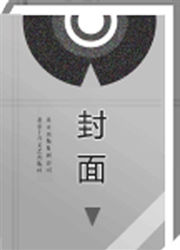

 中文摘要:
中文摘要:
利用real-time RT-PCR和高效液相色谱技术对水稻条纹病毒(Rice stripe virus,RSV)侵染水稻(Oryza sativa subsp.japonica)植株和水稻悬浮细胞内的生长素合成酶基因YUCAA1表达量和内源生长素含量的变化分别进行了测定。结果表明,在细细水平,RSV侵染后的16-64h内能显著引起YUCAA1mRNA表达量的上调和内源生长素含量的升高。与同一生长阶段的健康水稻相比,水稻植株接种后4-8d内也可导致YUCAA1mRNA表达量的上调和内源生长素含量的上升,而在接种后12和16d时,病株内的YUCAA1mRNA的表达量和内源生长素的含量均下降。这表明在RSV侵染水稻后的发病过程中,RSV能够调控寄主植物内源生长素的合成。同时,利用KPSC缓冲液处理病株来消除其内源生长素,能够引起RSVCP基因表达上调近2.9倍,另外用30μmol/L IAA溶液处理病株可使其体内的RSV CP基因表达下调45%,表明水稻体内生长素含量的变化能够影响RSV在寄主体内的复制。
 英文摘要:
英文摘要:
The expression of YUCAA1 gene and the amount of endogenous IAA in rice( Otyza sativa subsp, japonica) plants and rice suspension cells infected by Rice stripe virus (RSV) were investigated by Real-time RT-PCR and high performance liquid chromatography, respectively. And the results showed that the expression of YUCAA1 gene and the amount of endogenous IAA increased at various times (16, 32, 48 and 64 h) after post-infection by RSV in rice suspension cells. In rice plants infected by RSV, the expression of YUCAA1 gene and the amount of endogenous IAA increased at 4-8 d after post-infection as comparison with that of healthy rice plants, and decreased at 12 and 16 d. These results indicated that RSV infection could regulate auxin biosynthesis in flee. Additionally, the expression of RSV CP increased 2.9 times in rice plants after it was treated with KPSC buffer to deplete the endogenous auxins, and decreased 45% after 30μmol/L IAA treatment. All of these results suggest that the auxin may play a role among RSV replication in rice plant.
 同期刊论文项目
同期刊论文项目
 同项目期刊论文
同项目期刊论文
 期刊信息
期刊信息
